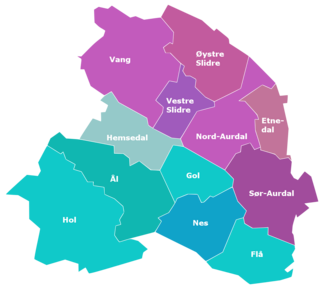Hallingmål-Valdris
In the broad spectrum of Hallingmål-Valdris, a wide variety of topics, approaches and perspectives can be found. Whether it is exploring the life and work of a historical figure, analyzing current challenges in a certain area or reflecting on the impact of a significant date, Hallingmål-Valdris invites us to immerse ourselves in a universe of possibilities. Through this article, we will embark on a fascinating journey that will allow us to discover, learn and reflect on Hallingmål-Valdris from different perspectives.
| Hallingmål-Valdris | |
|---|---|
| Halling, Hallingdøl, Valdresmål | |
| Native to | Norway |
| Region | Hallingdal, Valdres |
Indo-European
| |
| Language codes | |
| ISO 639-3 | – |
| Glottolog | None |
 | |
Hallingmål-Valdris (also known by the individual names Halling, Hallingdøl, or Valdresmål) is a group of Norwegian dialects traditionally spoken in the traditional districts Hallingdal, Buskerud and Valdres, Oppland.
Phonology
Consonants
- /rn/ is usually realized as a prestopped nasal , while the allophone only occurs in words like baren () "the bar".
- /rl/ also has a prestopped realization .
- The phoneme which is commonly called thick L (written /ɽ/ in IPA), exists in words that had either ⟨l⟩ or ⟨rð⟩ in Old Norse. In Vang, /ɽ/ occurs only in the first case.
- The consonant clusters ⟨sk⟩, ⟨skj⟩, and ⟨sj⟩ were not pronounced as [ʂ], only ⟨-rs-⟩ was. Sørbygdi in Flå pronounces ⟨sj⟩ as , while Gulsvik pronounces it as .
- The consonant clusters ⟨sl⟩ and ⟨tl⟩ were mostly assimilated to . Hol and Ål assimilated these to , and Sørbygdi in Flå assimilated ⟨sl⟩ to .
- The clusters ⟨-ld⟩, ⟨-nd⟩ and ⟨-mb⟩ are pronounced as spelled.
- The Old Norse cluster ⟨-fn⟩ is pronounced as assimilated or .
Vowels
- The back vowels and in older Hallingmål-Valdris were pronounced as in Old Norse, without the vowel shift to, respectively, and that is found in most other Norwegian dialects.
- The short Old Norse vowels ⟨o⟩ and ⟨ö⟩ are pronounced as central [ɞ] almost everywhere, except for Ål (but not Torpo), where these are back [ɔ]. In Valdres (except for Vang), the schwa /ə/ can also be realized as [ɞ].
- Traditionally, /æ, æː/ were pronounced as open-mid .
- The words pronounced and mean "I" and "am", respectively.
- Itacism is found in southern Hallingdal (Flå, Nes and some in Gol), making the vowel /yː/ to be unrounded to [iː].
- The Old Norse diphthongs ⟨ei⟩, ⟨ey⟩ and ⟨au⟩ are traditionally pronounced as , ( in southern Hallingdal) and . This is occurs today especially in upper Valdres and Hol and Ål.
Grammar
Citations
Notes
- ^ The southern villages Begnadalen and Hedalen in Sør-Aurdal, Valdres don't speak Valdris, as their dialect is closer to the Ringerike dialect.
- ^ It may also be realized as in Hemsedal, Gol and the southern villages in Valdres, although this only occurs in plural definite form.
- ^ a b The IPA used here is with the traditional diphthongs, and the vowel shift.
- ^ a b c d Only used in Valdres.
- ^ a b Only used in Hallingdal and the southern villages in Valdres.
- ^ a b Only used in Hallingdal.
- ^ These forms are used interchangeably, though Hallingdal only uses the first, without the r.
- ^ Only used in Aurdal and Etnedal.
- ^ a b Only used in Valdres, except for Vang.
- ^ a b c Only used in Sør-Aurdal.
- ^ In the older dialects of Vang and Slidre, has been used for feminine, but is not used today.
- ^ a b c Only used in Hol and Ål.
References
- ^ Hammarström, Harald; Forkel, Robert; Haspelmath, Martin; Bank, Sebastian (2022-05-24). "Older Runic". Glottolog. Max Planck Institute for Evolutionary Anthropology. Archived from the original on 2022-11-13. Retrieved 2022-11-13.
- ^ Kvåle 1999, p. 7.
- ^ Jahr 1990, p. 57.
- ^ Kvåle 1999, p. 12.
- ^ a b c Skjekkeland 1997, p. 116.
- ^ Kvåle 1999, p. 19, 21.
- ^ a b c d Jahr 1990, p. 58.
- ^ a b Kvåle 1999, p. 17.
- ^ a b Venås 1977, p. 36.
- ^ Ross 1907, p. 20.
- ^ Venås 1977, p. 16.
- ^ Kvåle 1999, p. 18.
- ^ a b Skjekkeland 1997, p. 216.
- ^ Venås 1977, p. 48.
- ^ a b c Kvåle 1999, p. 15.
- ^ Skjekkeland 1997, p. 47.
- ^ Kvåle 1999, p. 16.
- ^ Venås, Kjell. "dialekter i Hallingdal". snl.no. Retrieved 8 July 2015.
- ^ a b Jahr 1990, p. 56.
- ^ Kvåle 1999, p. 20-25.
- ^ a b c d Ross 1907, p. 22.
- ^ Kvåle 1999, p. 32-34.
- ^ Venås 1977, p. 127-133.
- ^ a b c d Kvåle 1999, p. 32.
- ^ Venås 1977, p. 127-128.
- ^ Kvåle 1999, p. 34.
- ^ Venås 1977, p. 129.
Literature
- Jahr, Ernst Håkon (1990). Den Store dialektboka (in Norwegian). Oslo: Novus. ISBN 8270991678.
- Kvåle, Karen Marie (1999). Dè è'kji gøtt veta ko dai saia: talemålsendring i Valdres (in Norwegian). Oslo: Valdreslaget i Oslo. ISBN 8299538505.
- Ross, Hans (1907). Norske bygdemaal. 3-6: Oust-telemaal o numedalsmaal; Hallingmaal o valdresmaal; Gudbrandsdalsmaal; Upplandsmaal (in Norwegian). Christiania: Kommission hos Jacob Dybwad.
- Skjekkeland, Martin (1997). Dei norske dialektane: tradisjonelle særdrag i jamføring med skriftmåla (in Norwegian). Kristiansand: Høyskoleforlaget. ISBN 8276341039.
- Strand, Thea Randina (2009). Varieties in Dialogue: Dialect Use and Change in Rural Valdres, Norway. The University of Arizona. ISBN 978-1109104257.
{{cite book}}: CS1 maint: location missing publisher (link) - Venås, Kjell (1977). Hallingmålet (in Norwegian). Oslo: Samlaget. ISBN 8252107176.